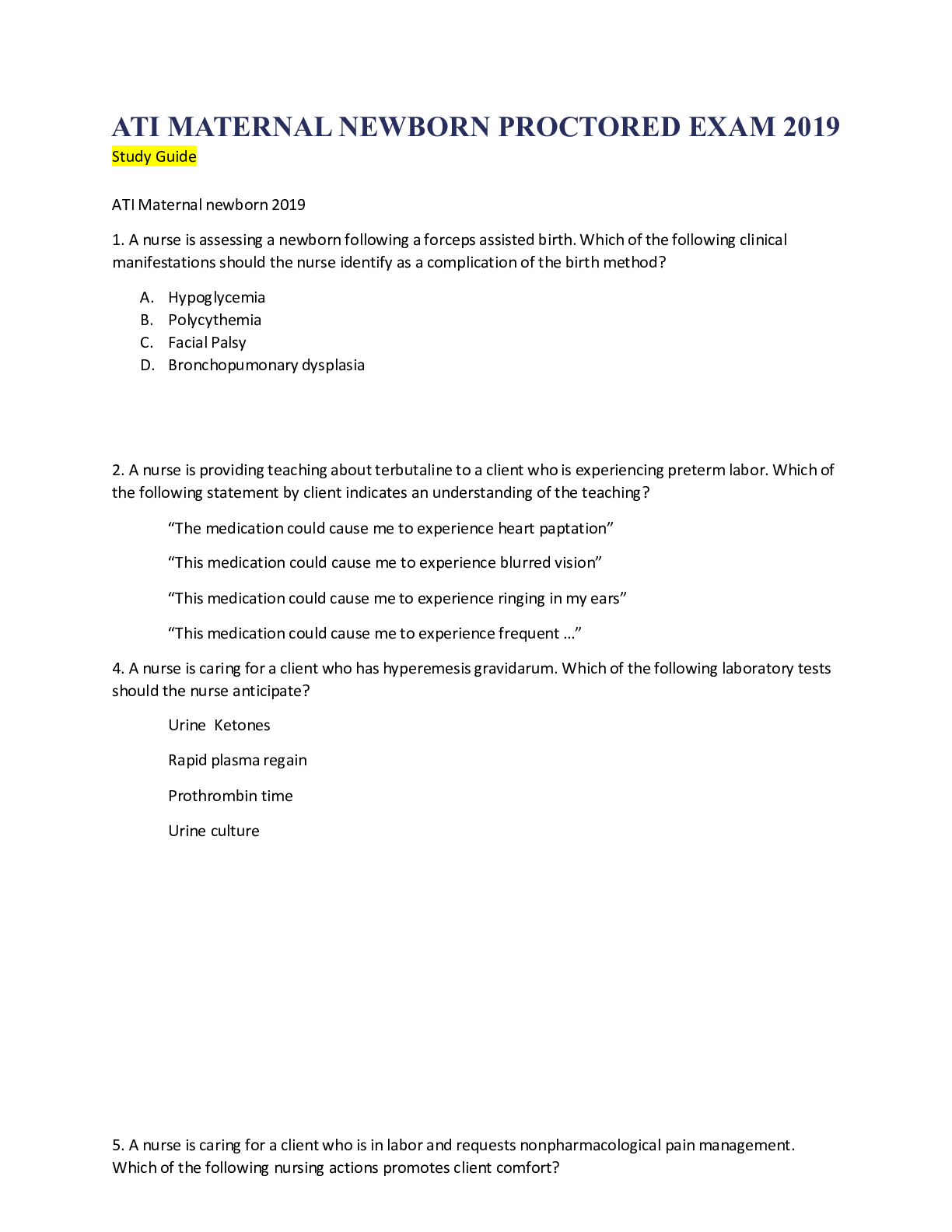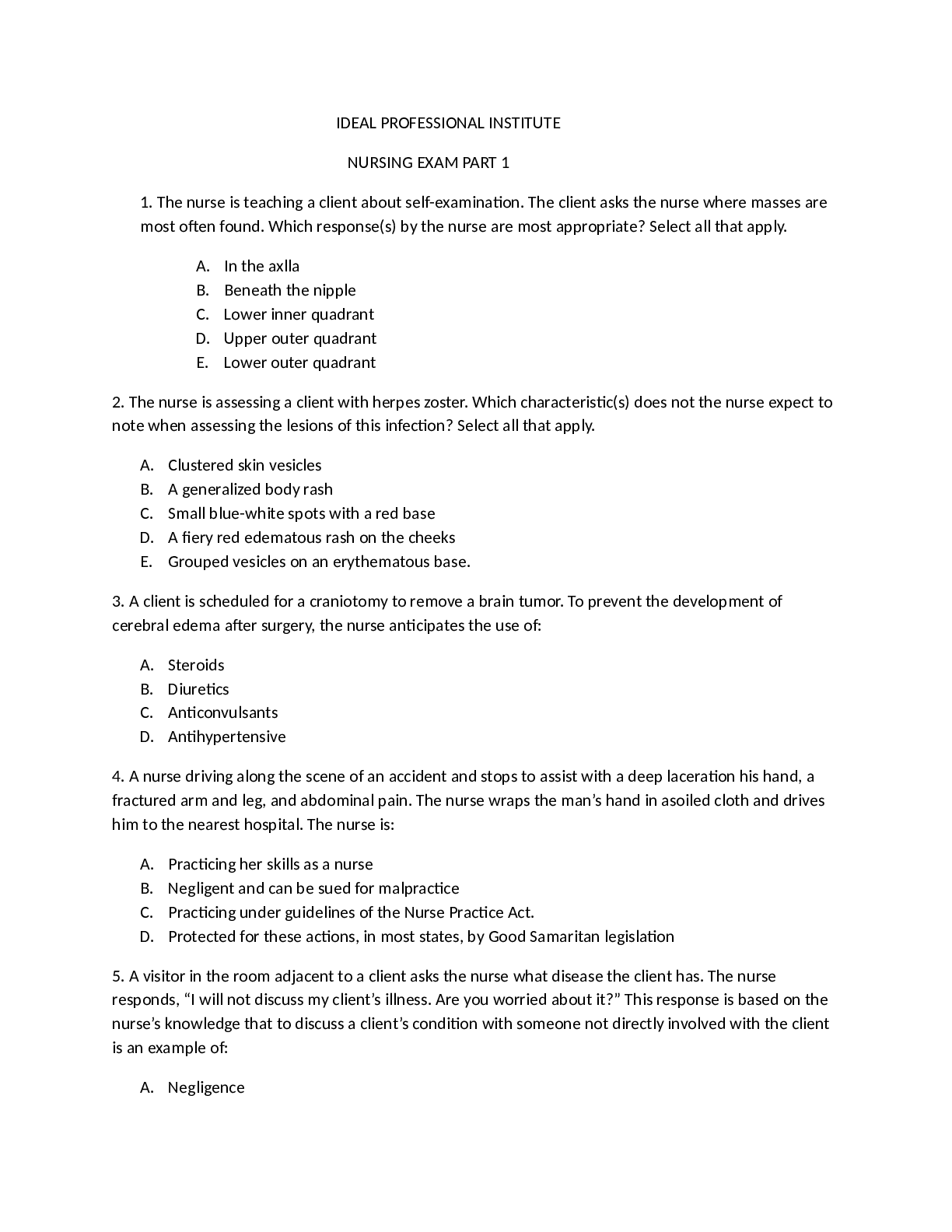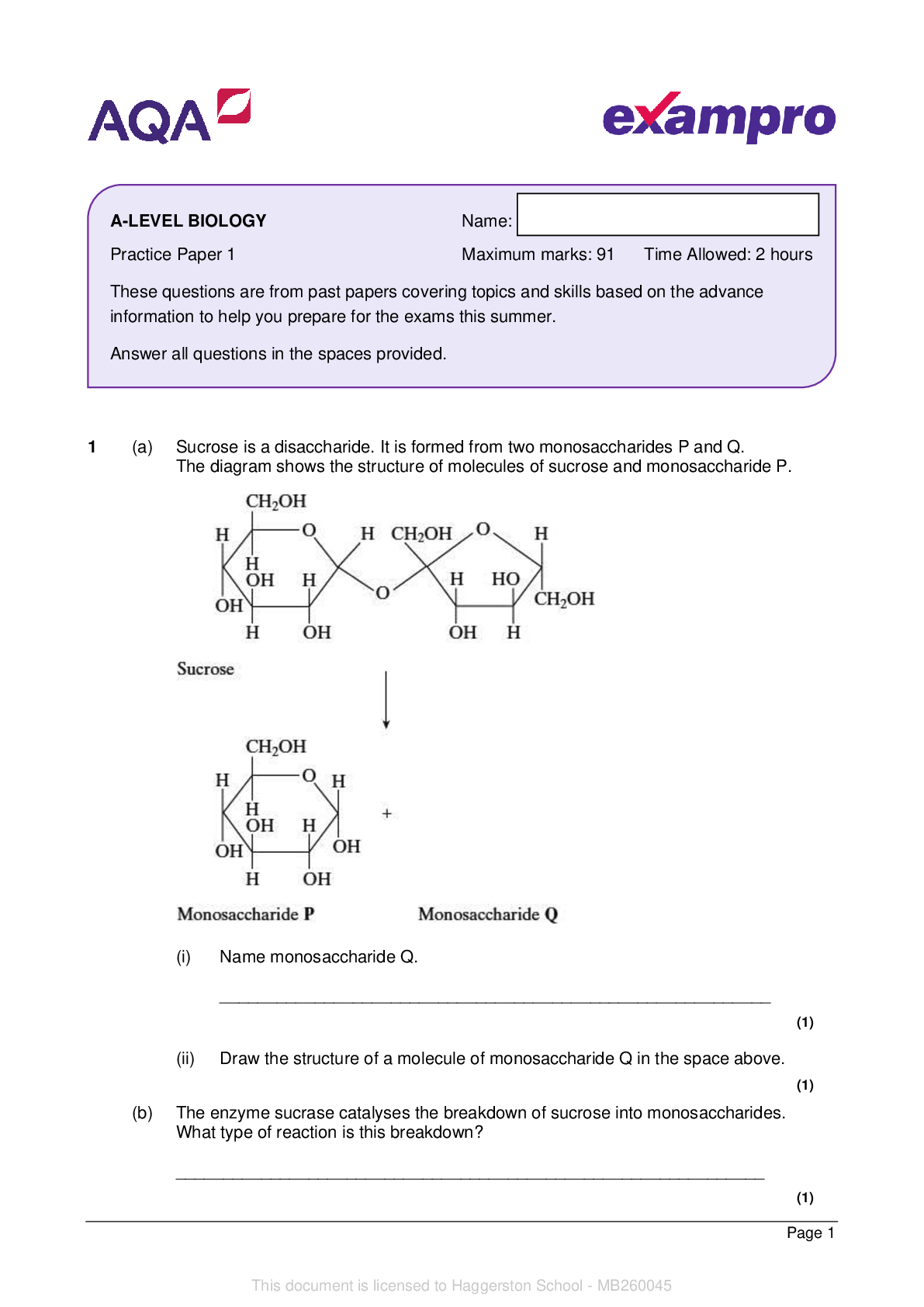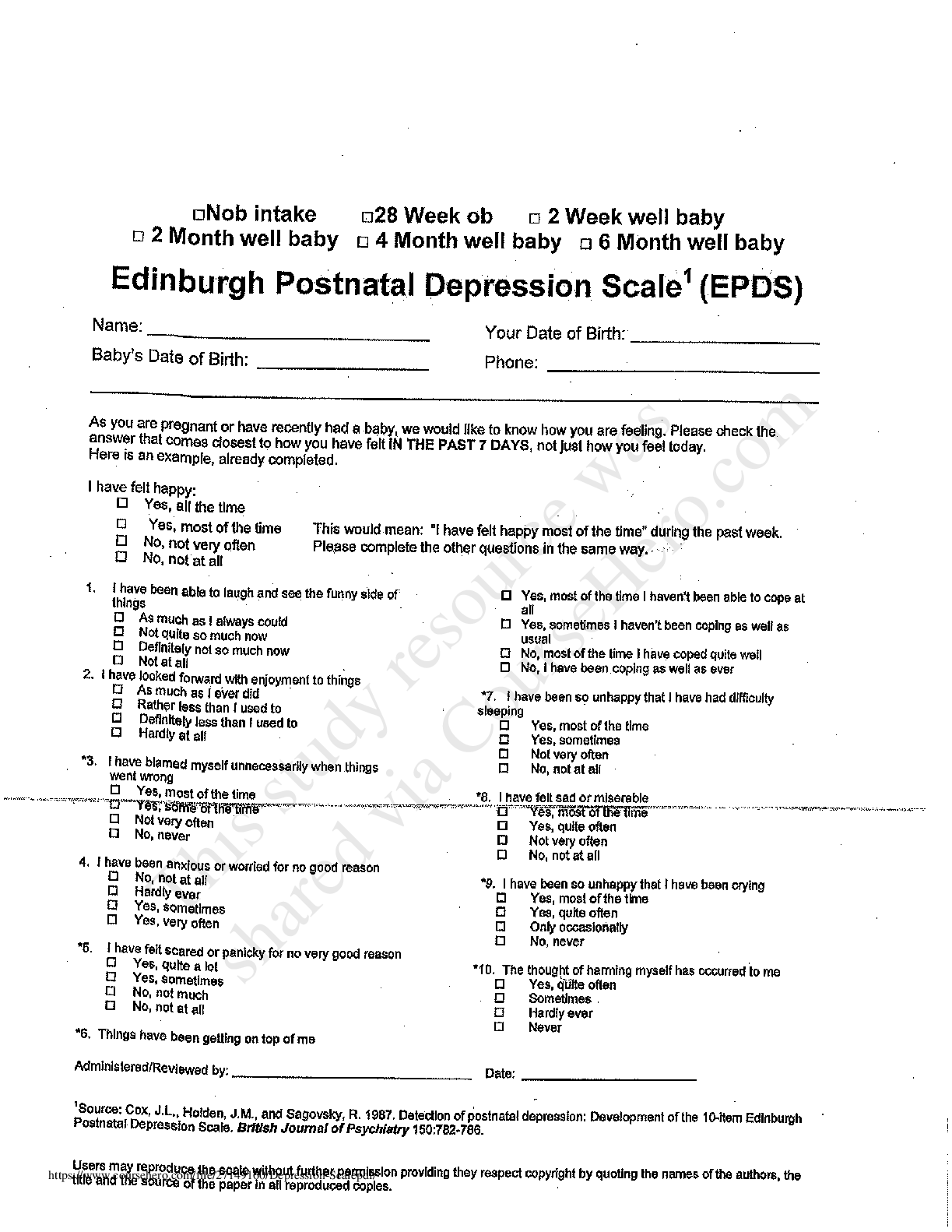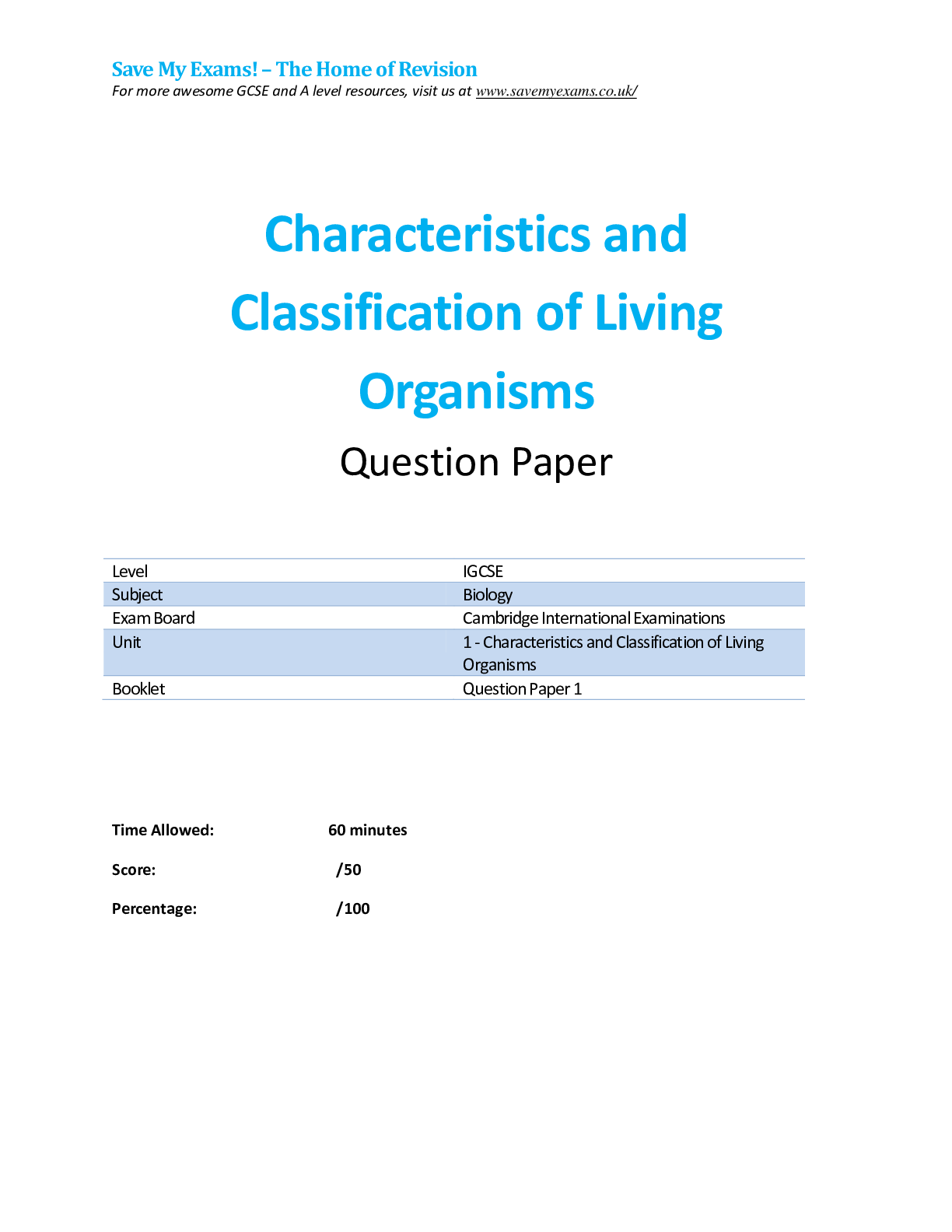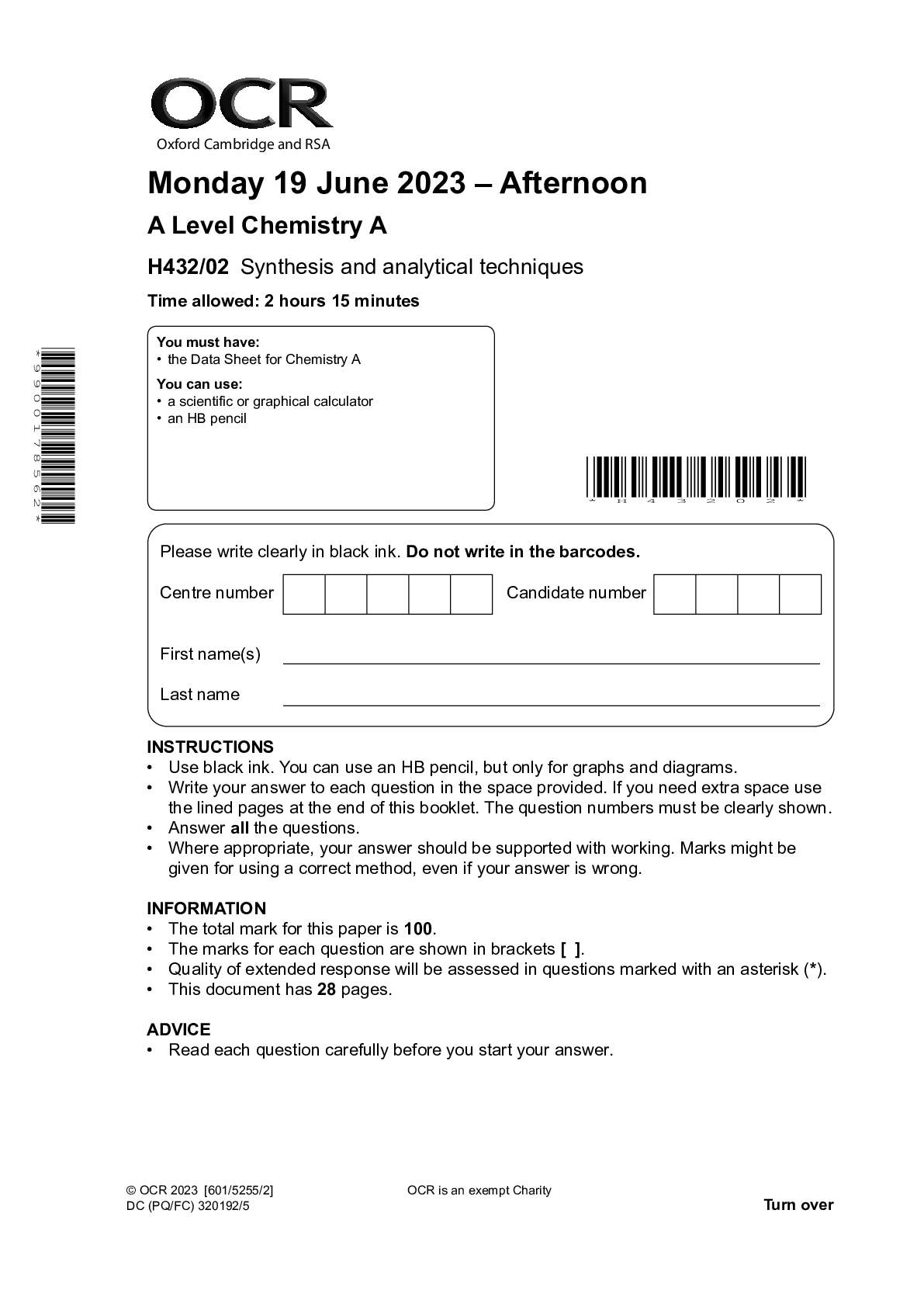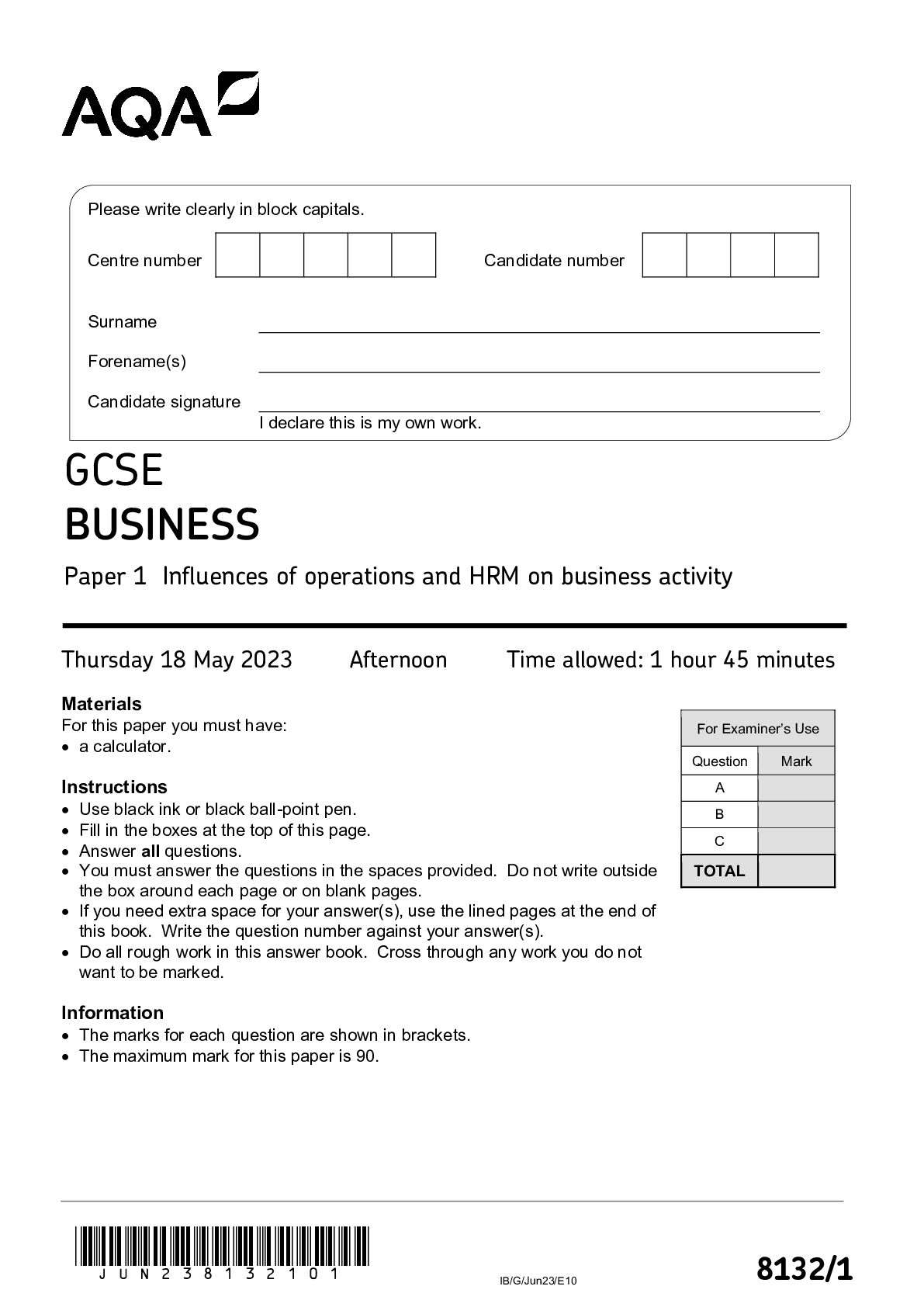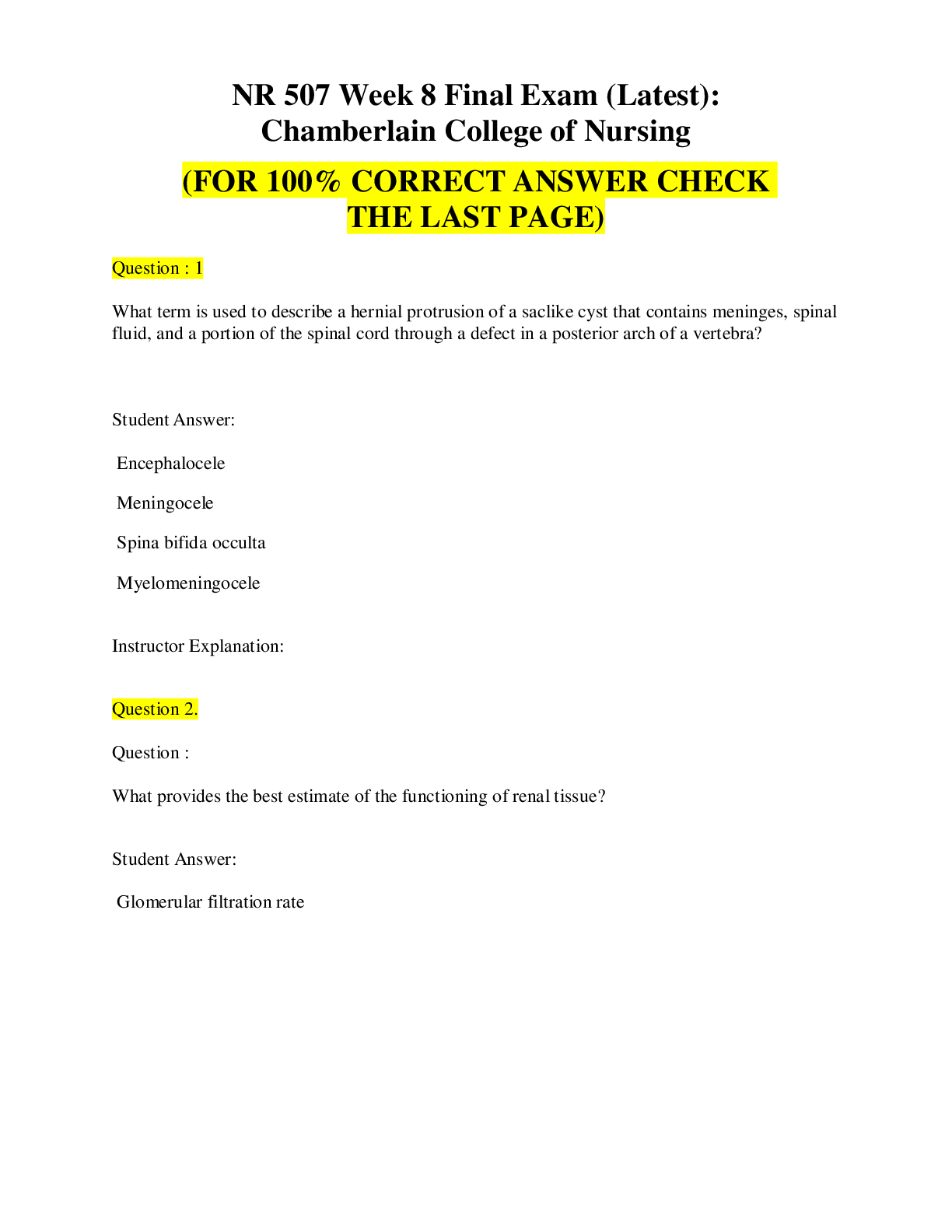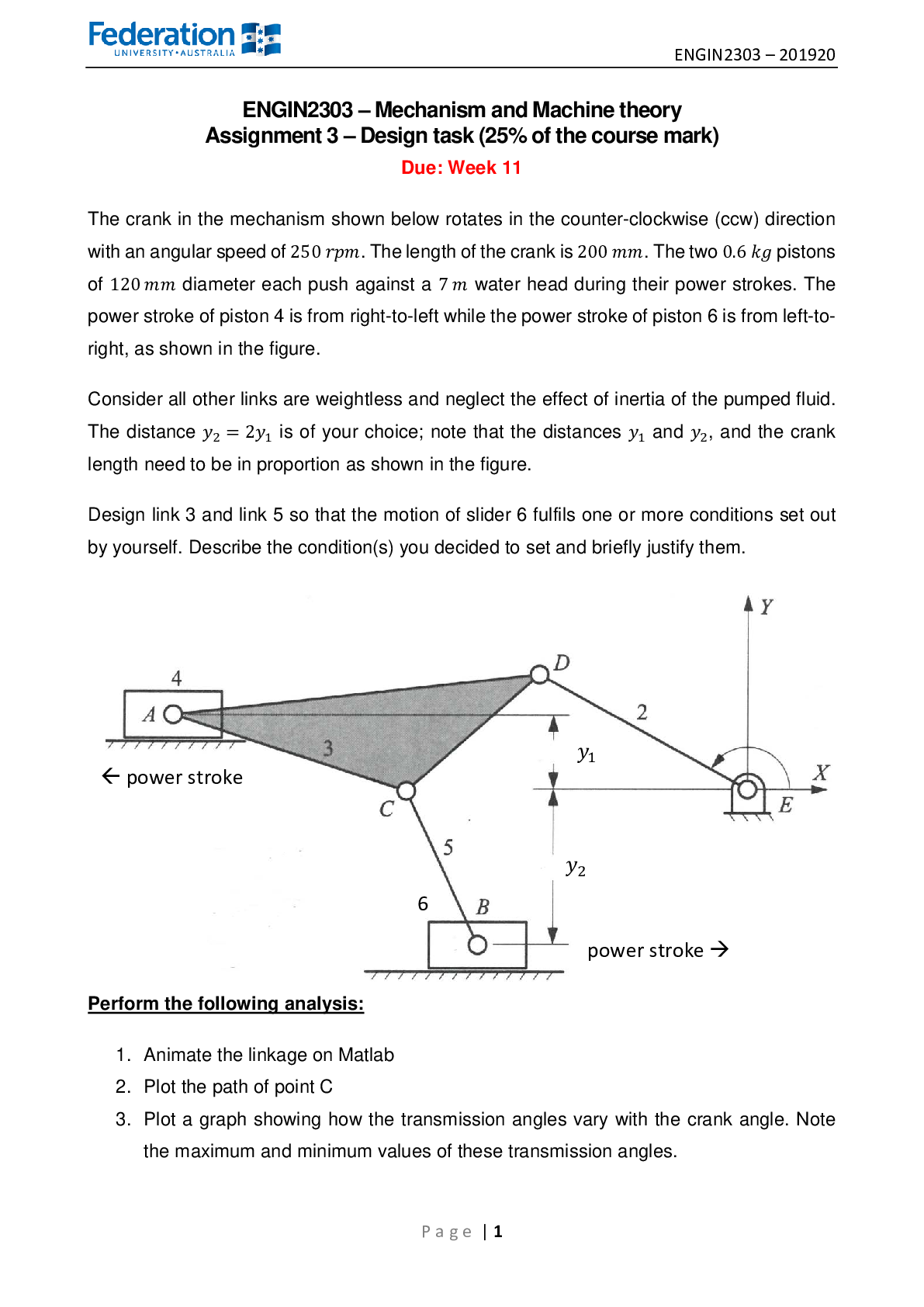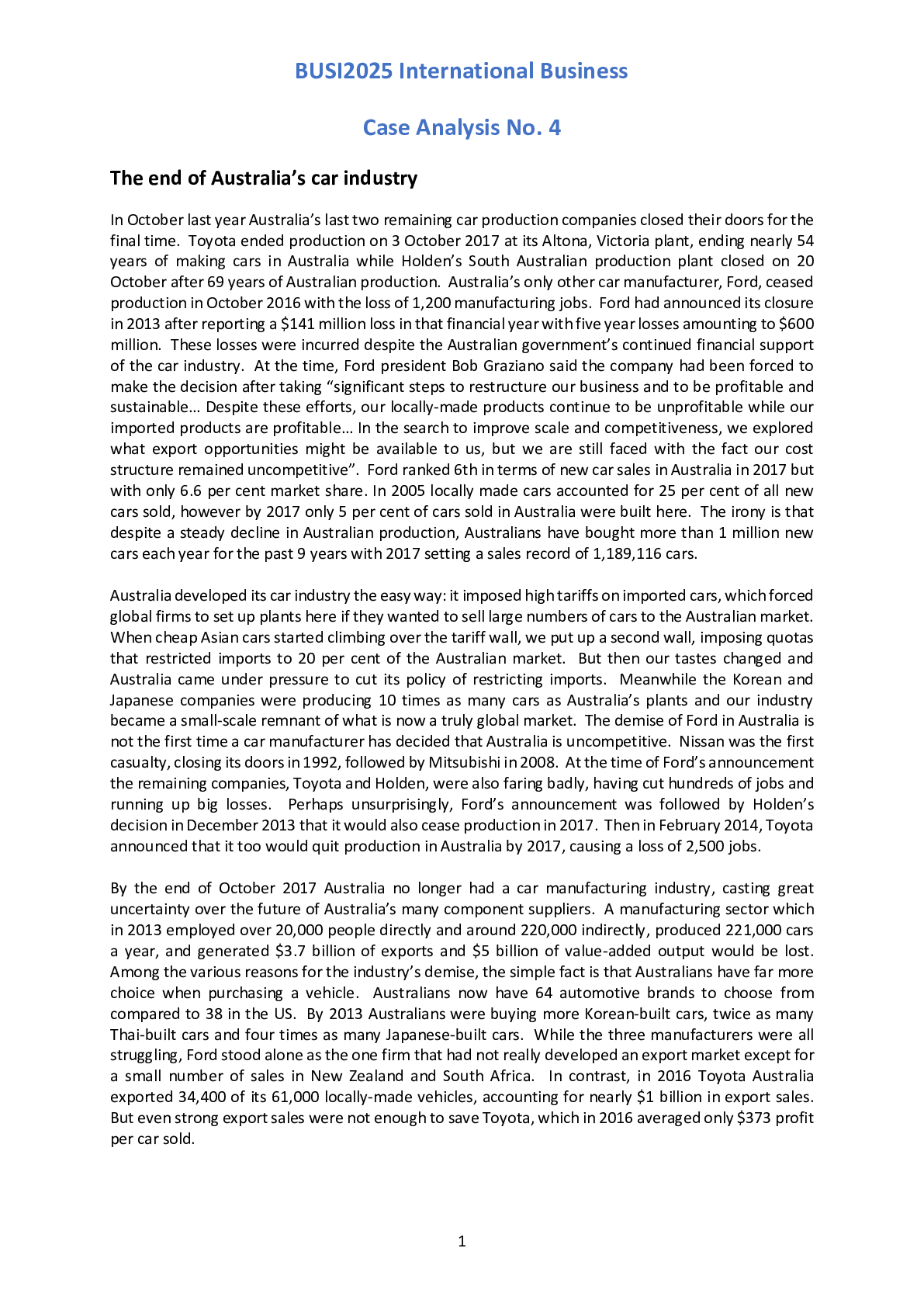Computer Science > QUESTION PAPER (QP) > practice test C 157 detailed questions with answers with the ability to give you an A+ (All)
practice test C 157 detailed questions with answers with the ability to give you an A+
Document Content and Description Below
Analyze each question and choose the best response. Record your rationale for each choice. 1. Quality improvement assumes that: a. Most problems with service delivery result from process difficultie... s, not individuals. b. Frequent inspection is necessary to improve quality. c. Employees generally try to avoid work. d.Top management leads all quality improvement activities. 2. The term “quality” as used in quality improvement usually refers to: a. Characteristics of a product or service that bear on its ability to satisfy stated or implied needs. b. A product or service free of deficiencies. c. Having a high degree of excellence. d. All of the above. 3. The major difference between traditional “quality assurance” activities (e.g., keeping track of the total number of different procedures conducted in your practice, rates of adverse outcomes) and “quality improvement” activities is that quality improvement also focuses on: a. People and competency. b. Analysis of data. c. Performance measures. d. Systems and processes. 4. Effective quality improvement does not require: a. Leadership and commitment from management with long-term vision. b. An emphasis on inspection of individuals’ work. c. Increased investment on employee education and training. d. Scientific redesign of processes/services . 5. A leadership style that is said to motivate employees, and that optimizes the introduction of change is: a. Autocratic – A clear top-down approach where a single individual has complete power of decision-making and little discussion is had for external input. b. Consultative – A style where leaders engage subordinates/peers in the decision-making and problem-solving process, but ultimately make the final decisions for the team. c. Participatory – An approach where leaders interact with other participants as peers, engaging them in the decision-making process and playing an equal role in the process as others and jointly carrying out the problem solving activities. d. Democratic – An open style of running a team where leaders facilitate discussion among all members, encourage ideas to be shared, and consider everyone’s input in order to make final decisions for the team. 6. Which representatives of a CV practice should be included on a quality improvement team to implement a new practice: a. Cardiologists only. b. Cardiologists and nurse practitioners. c. Cardiologists, nurse practitioners, quality improvement staff, and practice administrator. d. All staff directly affected by the quality improvement practice to be implemented. Combined Practice Test – UNC2, C157 7. When is it appropriate to collect and use data? a. Before the QI project, to prove a problem exists. b. During the QI project, to answer questions about the cause and help prioritize the implementation of improvements. c. After the implementation of the improvement to maintain the gain. d. All of Above. 8. Which of the following concerns would be best solved by a QI team? a. A computer systems issue with linking the clinical database to the hospital ADT system. b. A discipline issue with a problem employee. c. An individual customer complaint regarding lengthy wait time. d. A financial variance in cost per left heart cath procedure over the past 6 months. 9. The first step in problem solving is to: a. Assume the worst. b. Establish responsibility for change. c. Collect and analyze data. d. Define the problem issue. 10. After assessing current work flow and processes, a clinical team presumes that a delay can occur anywhere along the process of their tasks. Data is inadequate at this point to identify a particular time of day, day of week, type of patient, and/or step in the process that is largely responsible for the delays. Further data collection is necessary. What should the team “product” be for the next meeting? a. A prioritization matrix. b. A finalized data collection tool and instruction sheet for implementation. c. A list of questions to be answered and a draft data collection tool. d. A listing of possible solutions. 11. As a building block for determining whether or not quality has been improved, the use of basic descriptive statistics in applying CQI is critical. Which of the following is not a quantitative description of the basic features of a study? a. Mean data values. b. Frequency counts. c. Hospital ratings. d. Standard deviations. 12. Of the following, two statistics are essential for identifying opportunities for performance improvement. These are: a. Frequency counts and modes. b. Variance and distributions. c. Mean and median values. d. Data ranges and standard deviations. [Show More]
Last updated: 1 year ago
Preview 1 out of 15 pages

Reviews( 0 )
Document information
Connected school, study & course
About the document
Uploaded On
Apr 07, 2021
Number of pages
15
Written in
Additional information
This document has been written for:
Uploaded
Apr 07, 2021
Downloads
0
Views
89

.png)



